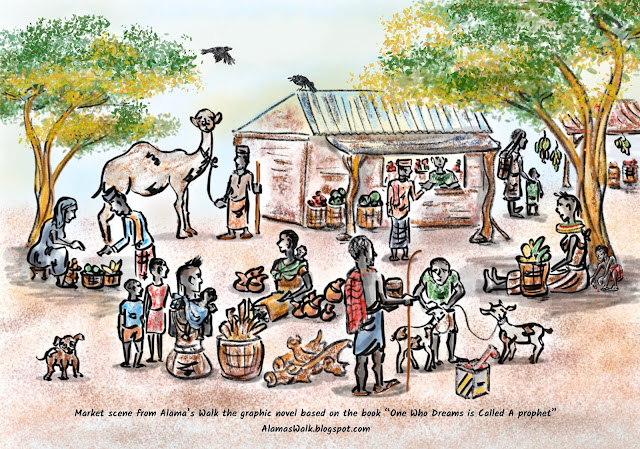"One Who Dreams is Called a Prophet engages with the eternal and universal quest for the source of peace within self and oneness with the environment, as well as collective social cohesion...
Somjee’s main protagonist is a Turkana elder called Alama who sets out on a spiritual-philosophical quest for the source of peace. He is troubled by his desire for revenge against humiliation suffered against his family and clan, largely based on his upbringing that a warrior must take pride in acts of aggression. Restless and uneasy, he sets out from the arid lands of Northwest Kenya and traverses the Kenyan landscape in a quest for self-discovery."
For the full review visit Muse India - the literary ejournal
Quote from Professor Ngũgĩ wa Thiong'o
“The book has a lot of history in it. With a very profound title, ‘One Who Dreams is Called a Prophet’ is driven by a dream, Somjee’s dream driven by his belief in the people and a dream that makes us survive.”
Book launch YouTube video
Old Africa Magazine - Issue 95 June-July 2021
Awaaz Magazine
"The story takes the form of a walk of a pastoralist seeking one of humankind's most sought-after ideals, the search for peace, especially relevant now during the times of internal and external conflicts. The protagonist, Alama, (Somjee’s alter ego) sets out to explore Utu, an African humanist philosophy. Utu comes from the Swahili word meaning 'being mtu' or simply 'being human.' It stands for a set of traditional African values that connect the spiritual realm, the community, ancestors and nature in reciprocal relationships of respect. In South Africa, Ubuntu can be translated into many African languages bringing the meaning home... Ngũgĩ wa Thiong'o launched the 614-page book on November 25th, remarking "prophets are very conscious and connected to the land and environment." "
Alberto Parise, Comboni Missionary Rome, November 2020
"All that resonates so deeply with my 18 year experience as a missionary in Kenya... One Who Dreams is Called a Prophet is a captivating reading, very entertaining, with an unpredictable plot and a vivid narrative that paints every scene as a microcosm that unfolds through rich sensorial renderings and spiritual insights. African readers will find inspiration in it, and a path to develop an appreciative and critical consciousness of their own cultural heritage as a gift for peace."
Learning Peace Through African Biocultural Diversity
Review Vancouver
"His background as an ethnographer gives him ample material for his story lines. What makes him unique, however, is his insightful, poetic voice. His writing reaches deep into recesses in our being human. It awakens forgotten parts of our humanity, long hidden, covered up by lives immersed in acquisition, self-preservation, and egoistic endeavours. It refreshes the tired spirit, and opens doors to new visions of a better way to be. We taste what Alama seeks."
Amazon Reviews
"Now in an original book, One Who Dreams is Called a Prophet gives us a rare, kaleidoscopic vision of Indigenous cultures of peace. Weaving together memoir, history, and peace heritage traditions. Sultan Somjee tells the story of one of the most sought-after ideals of humankind, the search for peace within each of our souls."






